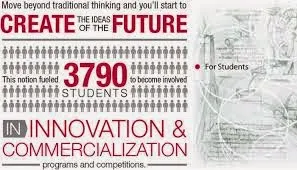Young physicians have much to teach their more mature colleagues.
Peer collaboration has increased since the internet developed, resulting in formerly impossible international networking.
One remarkable thing which distinguishes the new generation of student innovators from their elders is that they are changing the competition paradigm; rather than working secretly and erecting barriers against competitors, they are sharing experiences and learning from one another what works and what doesn't.
The Five Characteristics of Successful Innovators
Scanning this list, my natural inclination was to think of larger-than-life innovators like Steve Jobs and Mark Zuckerberg -- but since that time I've come to realize that there are students on campuses across the country with these very characteristics.
Physician innovators share several key character traits with other innovators. A Harvard Business Review article by Tomas Chamorro-Premuzic
A professor of Business Psychology at University College London (UCL) and Columbia University, he distilled the research evidence and proposed five key characteristics of innovators (in addition to creativity):
- An opportunistic mindset that helps them notice gaps in a market, and a craving for new and complex experiences.
- Formal education or training that is essential for understanding what is relevant and what is not (even though this may be contrary to conventional wisdom).
- Pro activity and a high degree of persistence.
- A keen sense of when to proceed with caution.
- Social capital that enables them to use connections and networks to mobilize resources and build alliances.
A young man named Nicholas (Niko) Kurtzman is symbolic of this new wave of student-led innovation. Niko is a 27-year-old second-year medical student at the Sidney Kimmel Medical College who is studying for exams; he is also a co-founder of two companies:
- EtherHealth, a company that offers a mobile app for physicians to "crowd source" informal, cross-specialty consultations on complex patient issues.
- MedX, a free, massive online course for medical students that addresses 30 topics that are essential to physician practice but not taught in medical school (e.g., pay-for-performance, work-life balance). as determined by early-career healthcare professionals and taught by the nation’s experts in health care delivery science and management.
Not surprisingly, Niko describes himself as a very high-energy "people person" who thrives on multitasking and complex problem-solving.
When asked, "Why medical school?" he posits that knowledge of business, product design, and development -- in addition to medicine -- will enable him to help patients on a broader scale.
Unlike his father, a physician-innovator who ultimately opted to work full-time in a successful business he founded, Niko plans a career that encompasses both innovation and emergency medicine.
One remarkable thing that distinguishes the new generation of student innovators from their elders is that they are changing the competition paradigm; rather than working secretly and erecting barriers against competitors, they are sharing experiences and learning from one another what works and what doesn't.
Today, student-led innovation centers are beginning to crop up on campuses across the country, from the University of Central Florida (Center for Entrepreneurial Leadership) to Stanford University in California to Massachusetts General Hospital to the University of Pennsylvania.
One example is the Jefferson Accelerator Zone
JAZ will serve as "command central" for innovation activities at Jefferson, including events related to the Innovation Engagement Speaker Series, Healthy Hackathons, and other programs under development. We welcome all members of the Jefferson chapter of the National Academy of Inventors with unlimited access to JAZ to foster mentoring of new ideas and commercialization prospects within the Jefferson community. JAZ will serve as a platform to engage and unleash creative, entrepreneurial talent.
This only one of several university affiliated innovation centers across the United States. These centers are often partnered with local entrepreneurial minded individuals or established business in the fields of engineering, technology, and computer science.
The most apparent advantage of University affiliated innovation centers is that they are located in centers of learning, a fertile ground for creativity, and adjacent to an academic center where students can easily access a center. The innovation center serves as a center and platform for visiting entrepreneurs, and lecturers.
Plant the seed, fertilize it, nurture it
More.......





No comments:
Post a Comment